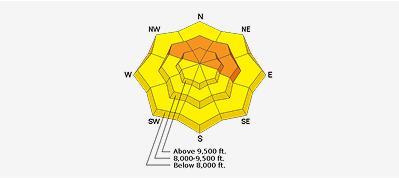Observation Date
1/12/2022
Observer Name
CBrown
Region
Salt Lake » Little Cottonwood Canyon » Grizzly Gulch
Location Name or Route
Grizzly Gulch
Comments
The shallow snowpit was dug within 50' of deeper snowpit. The structure and test results of the shallower pit can be seen in the image/snow profile. The HS was 195cm vs 135cm. The deeper pit had DTH22 Q2 and ECTN on moist FCxr vs ECTP22, PSTEnd 30/100 on dry 2-3mm FC in the shallower pit. Given the current spatial variability triggering a persistent slab avalanche on mid to upper elev slopes in thinner areas is still possible in the central Wasatch (deepest pack region) .
Not knowing where the snowpack is shallower or deeper or the stage of the PWL on avalanche slopes could be a fatal mistake as we continue in this low probability, high consequence period. Recognizing there is uncertainty on upper/mid elev W-N-E facing slopes and the consequences of a miscalculation in avalanche terrain could produce a deep hard slab avalanche. Gathering good information is key, and doing the incorrect test and putting weight in false negatives provides a false sense of security. The extended column test is good UP TO 100-120cm. When the weak layer is deeper than that or close to that depth it provides poor information. If there is substantial hard slab protecting the weak layer the ECT may also be the incorrect test. We have both of those factors in play currently. The propagation saw test and deep tap test are a more appropriate tests in many places given the status of our persistent slab problem.
Today's Observed Danger Rating
Moderate
Tomorrows Estimated Danger Rating
Moderate
Coordinates






